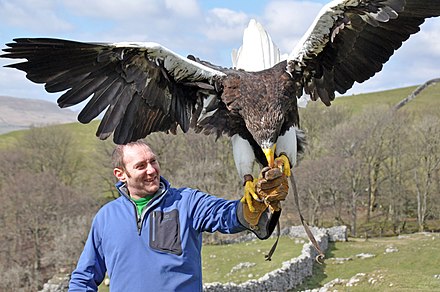Steller’s sea eagles are majestic birds of prey found in the far eastern regions of Russia, particularly in the Kamchatka Peninsula and the Kuril Islands. These impressive raptors are known for their massive size, impressive wingspan, and distinctive white tails and shoulders. During the winter months, when their primary prey of salmon and trout become scarce, Steller’s sea eagles must adapt their feeding habits to survive the harsh conditions.
The Winter Diet of Steller’s Sea Eagles
In the winter, Steller’s sea eagles primarily feed on a variety of fish, including:
-
Cod: These cold-water fish are a staple in the Steller’s sea eagle’s winter diet, as they are abundant in the coastal waters of the birds’ habitat.
-
Crabs and Shellfish: When fish are scarce, Steller’s sea eagles will turn to crustaceans and mollusks, such as crabs and clams, to supplement their diet.
-
Squid: These marine invertebrates are another important food source for Steller’s sea eagles during the winter months.
-
Small Animals: In addition to aquatic prey, Steller’s sea eagles will also hunt small mammals and birds, such as ducks and gulls, to meet their caloric needs.
-
Carrion: When other food sources are limited, Steller’s sea eagles will scavenge on the carcasses of dead animals, including those left behind by hunters or other predators.
Hunting Strategies in Winter
 Image source: stellers sea eagle
Image source: stellers sea eagle
Steller’s sea eagles employ a variety of hunting techniques to capture their prey during the winter:
-
Perch Hunting: These birds will often sit on a high vantage point, such as a tree or cliff, and wait patiently for fish to swim within reach. When the opportunity arises, they will swoop down and snatch their prey with their powerful talons.
-
In-Flight Hunting: Steller’s sea eagles are also skilled at hunting from the air, diving down to the water’s surface to grab fish or other aquatic creatures.
-
Wading in Shallow Water: In some cases, Steller’s sea eagles will stand in shallow water or on the ice to catch passing fish, using their sharp eyesight and quick reflexes to strike.
-
Scavenging: When other food sources are scarce, Steller’s sea eagles will scavenge on the carcasses of animals left behind by other predators or hunters, such as Sika deer.
Adaptations for Winter Survival
Steller’s sea eagles have several adaptations that help them survive the harsh winter conditions in their native habitat:
-
Massive Size: These birds are the largest of the sea eagle species, with a wingspan that can reach up to 2.5 meters (8 feet). Their large size and powerful build allow them to tackle larger prey and withstand the cold temperatures.
-
Thick Plumage: Steller’s sea eagles have a dense, insulating layer of feathers that helps them retain body heat and stay warm in the frigid winter weather.
-
Efficient Metabolism: These birds have a high metabolic rate, which allows them to generate and conserve body heat more efficiently than smaller species.
-
Opportunistic Feeding: Steller’s sea eagles are highly adaptable and will readily switch to alternative food sources, such as carrion or small animals, when their primary prey becomes scarce.
Threats to Steller’s Sea Eagles in Winter
Despite their impressive size and adaptations, Steller’s sea eagles face several threats to their survival during the winter months:
-
Habitat Alteration: The degradation and loss of their natural habitats, such as coastal forests and wetlands, can reduce the availability of their prey and nesting sites.
-
Industrial Pollution: Contaminants and pollutants in the water and air can have a detrimental effect on the health and reproductive success of Steller’s sea eagles.
-
Overfishing: The depletion of their primary prey, such as salmon and trout, can make it increasingly difficult for Steller’s sea eagles to find adequate food sources during the winter.
-
Lead Poisoning: In some areas, Steller’s sea eagles have been known to scavenge on Sika deer carcasses left behind by hunters, exposing them to the risk of lead poisoning from ingesting lead shot.
To ensure the long-term survival of Steller’s sea eagles, it is crucial that conservation efforts focus on protecting their habitats, reducing industrial pollution, and promoting sustainable fishing practices in their native range.
Conclusion
Steller’s sea eagles are remarkable birds of prey that have adapted to the harsh winter conditions of their far eastern Russian habitat. By diversifying their diet and employing a range of hunting strategies, these majestic raptors are able to survive the lean winter months. However, they face a number of threats, including habitat loss, pollution, and overfishing, that could jeopardize their future. Continued conservation efforts are essential to safeguard the Steller’s sea eagle and ensure that these impressive birds continue to soar over the rugged landscapes of their native range.
References:
- https://denverzoo.org/ursula/
- https://animalia.bio/stellers-sea-eagle
- https://carnivora.net/stellers-sea-eagle-haliaeetus-pelagicus-t2363.html
- https://www.nationalgeographic.com/animals/birds/facts/stellers-eagle
- https://animals.sandiegozoo.org/animals/stellers-sea-eagle

